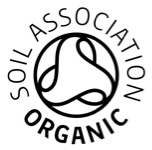When considering what exactly constitutes a quality cup of coffee, factors such as its aroma, acidity and body will all be taken into account.
When it comes to growing the ‘perfect’ bean for this purpose, there are a wealth of both geographical and non-geographical factors which play a part in determining how these factors affect the characteristic of the coffee. For example, climate, soil and topography can all make a difference to how the final roasted bean will taste when cupped, while agricultural and harvesting practices also hold enormous sway over the final flavour.
When considering a type of coffee, two pieces of information that are key for traders are the altitude and temperature at which the crop was grown. But why is this?
Why altitude?
Temperature and altitude are intrinsically linked, partly because the former depends so heavily on the latter.
Nevertheless, the equator also plays an important role in how altitude affects farming. This is because at the equator, the sunlight will fall more directly on plants, meaning that quality coffee beans can be produced at higher altitudes and lower average temperatures than they might otherwise be able to be.
Factors such as microclimates and wind speeds also have an effect on temperature, while the orientation of the farm on the hillside will equally impact other factors such as humidity. An eastern-facing plantation which is bathed in sunlight each sunrise will not behave in the same way as one facing an ocean, exposed to the humidity and rainfall that comes as a result of such – even if they are grown at the same height above sea level.
To this end, altitude and temperature encompass far more geographical factors – all of which can affect the flavour of coffee – than themselves alone, so to speak.
Looking at one particular region, the Colombian Coffee Hub explains how Colombia has three main bands when it comes to the altitude of plantations – between 1,200 metres above sea level (masl) and 1,650 masl, where the majority of crops are situated; a ‘low marginal zone’ between 800 and 1,850 masl; and a ‘high marginal zone’ between 1,600 and 2,300 masl.
According to the International Coffee Organization, the ideal temperature for growing a quality Arabica ranges from around 15 to 24 degrees C, while Robusta beans favour temperatures ranging from 24 to 30 degrees C, as they tend to flourish in hotter, drier conditions and are unable to tolerate some of the lower temperatures that Arabica crops can withstand.
Sweetness and acidity
Coffees grown at higher altitudes will tend to be sweeter and more acidic. As the Colombian Coffee Hub explains regarding the drop in temperature at night: “This condition makes the coffee tree produce more sugars, which are stored at the cherries, and allows the tree to protect itself. Hence, altitude coffees tend to be sweeter and more acidic.”
It goes on to explain how, interestingly, the same is true of grapevines in certain regions – the farming of which is a similarly delicate and carefully calculated process.
Striking the balance
As with any meticulous art such as producing the so-called perfect coffee bean, a fine equilibrium between the different factors must be respected. Plant the trees too high and they may not produce sufficient cherries in favour of more leaves; grow the crop at lower altitudes and the higher average temperatures mean the farmers run the risk of exposing them to more pests, for example.
Some may say that coffees grown at higher altitudes tend to be ‘better’. Two of the recent Cup of Excellence coffees were beans grown at a high altitude – one from a Buesaco farm in Narina in 2012 grown at over 2,100 masl and in 2011, from a San Agustin farm in Huila situated at 1,850 masl.
Nevertheless, this is entirely subjective. Those who prefer a sweeter, more acidic coffee are likely to believe this – however, those who prefer a fuller bodied, more bitter brew would likely disagree. It all depends on what you want, which is why at DR Wakefield we are driven by supplying the right coffee at the right price, as – quite simply – not everybody’s palates are the same.









